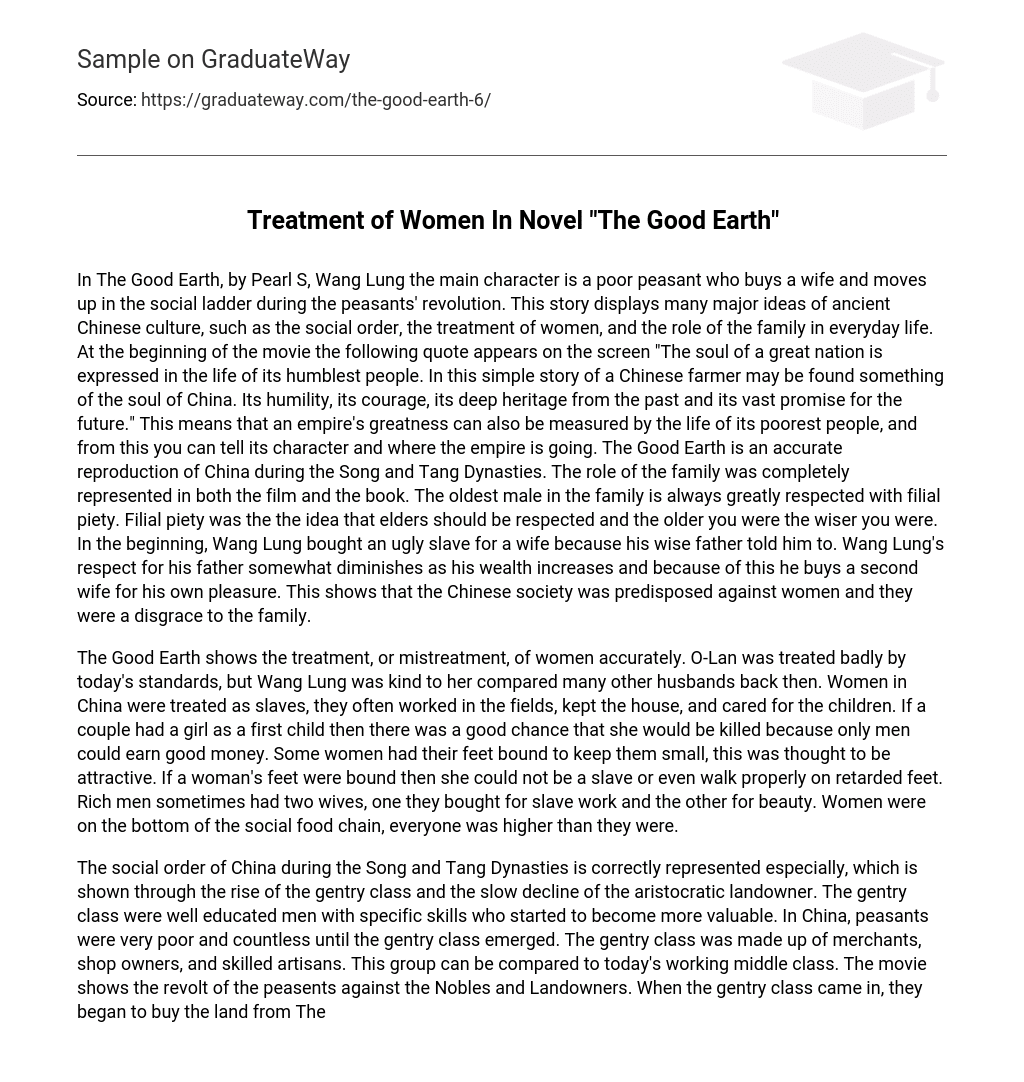In The Good Earth, Pearl S. Wang Lung, a poor peasant, buys a wife and experiences upward mobility during the peasants’ revolution. The story depicts key aspects of ancient Chinese culture, including the social order, the treatment of women, and the significance of family in daily life. The movie begins with a quote that conveys the idea that the character of a great nation can be seen in the lives of its most humble individuals. This suggests that the greatness and direction of an empire can be determined by its treatment of the impoverished. The Good Earth provides an authentic portrayal of China during the Song and Tang Dynasties, faithfully representing the important role of family. The eldest male is deeply revered, emphasizing the concept of filial piety – the notion that elders should be respected due to their wisdom. Initially, Wang Lung follows his wise father’s advice and buys an unattractive slave as his wife. However, as his wealth increases, his respect for his father wanes, causing him to acquire a second wife solely for his own pleasure.This suggests Chinese society held a bias against women, considering them a source of shame for their families.
The harsh reality of the treatment of women in The Good Earth is accurately depicted, whether it is positive or negative. O-Lan experienced harsh treatment, but compared to many husbands during her time, Wang Lung treated her kindly. In China, women were often treated as slaves and had various responsibilities such as working in the fields, managing the household, and caring for children. If a couple’s first child was a girl, there was a high likelihood she would be killed since only men were considered capable of earning good income. Moreover, certain women had their feet bound in order to appear attractive which hindered their functioning and limited their ability to walk comfortably on deformed feet. Wealthy men sometimes had two wives – one for slave labor and another for beauty. Women consistently held the lowest position in society’s hierarchy.
During the Song and Tang Dynasties in China, the social order underwent significant changes. These changes are accurately depicted in the rise of the gentry class and the gradual decline of the aristocratic landowners. The gentry class, consisting of educated individuals with specific skills, gained increasing value and importance. Prior to this, peasants in China lived in extreme poverty and struggled to make a living. However, with the emergence of the gentry class, the peasants found hope and support. The gentry class encompassed merchants, shop owners, and skilled artisans, resembling today’s working middle class.
The movie portrays a rebellion by the peasants against the Nobles and Landowners. This revolt coincides with the arrival of the gentry class, who started purchasing land from The Great House and gaining power and influence. Consequently, the educated scholars with specialized skills became highly respected and held significant authority. When Wang Lung acquired wealth, he too began buying more land and reaping the benefits of the crops cultivated on his property. With his increasing capital, he eventually acquired ownership of The Great House.
The Good Earth is an accurate portrayal of Chinese culture and life during the Song and Tang Dynasties. It tells the story of a poor peasant who rises to the top of society during a time of change in ancient China. The novel effectively depicts the rise of the Gentry class and the decline of the aristocratic nobles. Through its narrative, The Good Earth captures both the moments of joy and suffering experienced by the Chinese people.
Book Reports





